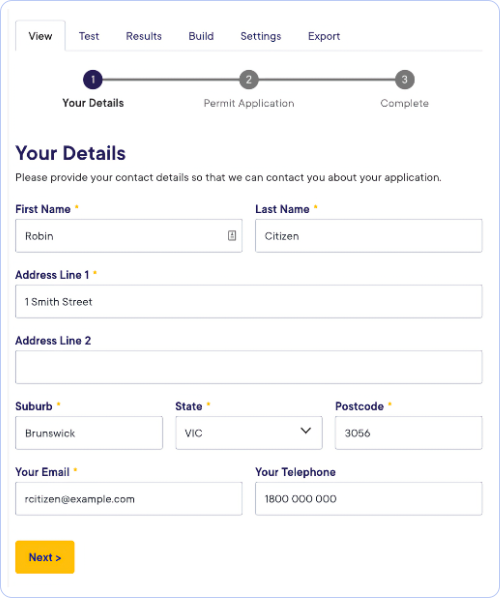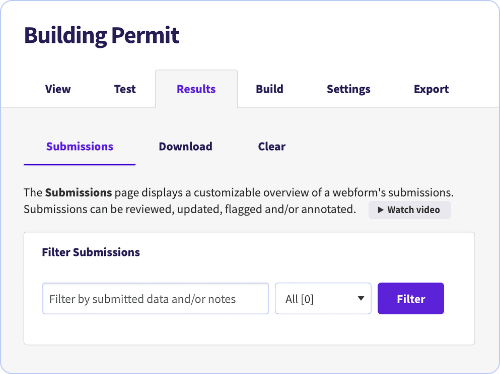A digital revolution has transformed the process of customer service for many local government organisations. This has been accelerated during the COVID pandemic with the need for remote customer servicing, but a surprising number of councils have been left behind, for example with legacy PDF form downloads providing this important aspect of customer service.
A contributing factor is the costs of converting PDF forms to online forms. These costs can be significantly reduced if the council can build and maintain its forms.
This article explores both the benefits of form digitisation and the methodologies to make it work within the context of council administration.
Greater customer amenity
A council’s mission is centred around the service the organisation can give to the ratepayers they serve. The ability to submit forms online speeds up the process for both customers and council administrators.
The aim is to shorten the feedback time between the council’s question and the customer’s answer. Additionally, councils need to ensure the answer is stored efficiently securely and is easily accessible to all departments with the council.
Providing online interactive digital forms for council ratepayers significantly increases interaction, the accuracy of data and efficiency in data handling.
So where do you start?
Easy form creation
Reducing friction in creating online council forms is key to accelerating the digital participation of council customers.
The council platform MUST have an efficient and intuitive form-creation interface that allows council administrators to progressively convert all council forms into online equivalents.
The District platform has a large library of fully complete forms and form components. Existing form structures can be duplicated, saving significant time when creating new forms. The Smart Form interface is intuitive and has drag-and-drop functionality for the ordering of form elements.
The existing forms are set up with standard workflows, confirmation messages and email submission handlers. For the more advanced form editor, extensive customisation is available through CSS and Javascript.
Workflow efficiencies
One of the greatest impacts of form digitisation is the increased efficiency of data handling. When a government customer fills in a form online, one step of data entry for the government has been eliminated. Further, field validation rules increase the accuracy of that data right from the beginning.
In the District platform, data from form submissions are held in a separate database for each specific form. These submissions can be both filtered and searched by any authorised user within the council. For example, a business analyst may need to produce a report on ratepayer participation in major projects for the upcoming annual report. The analyst can query the form submissions for each major project and filter by location, age, gender or any criteria collected by the form.
Any user with appropriate permission can access form data from any form, at any time, on any device. Taking the forms online has dissolved the siloed walls between departments and made data acquisition quick and easy.
The importance of data for councils
The move to online collection and processing of all form information requested by the council should be a priority, no matter the council size.
Collecting data online vastly simplifies the process and allows both internal and external searching of critical council information such as award contracts, development applications and more.
Good data governance
Critical to the agency’s collection of data from the public and associated stakeholders is the security, privacy and governance of this information.
Recent breaches of trust by major social platforms have eroded the public’s trust in the handling of personal information and it is essential that councils are transparent in how they handle sensitive personal information in the pursuit of legitimate data gathering exercises.
Councils and government agencies can deliver value to constituents by maintaining robust and secure processes in the collection, storage and sharing of information.
It is recommended that the storage of personal information be kept on servers within the council’s national borders to reduce the risk of foreign interference or seizure of sensitive personal data. This will also assist the council or government organisation to comply with local privacy legislation.
Finally, councils need to consider the appropriateness of personal information collection and whether identifying data needs to be collected in the first place. Limiting the collection of personal information reduces the impact of data breaches should they occur.
Easier administration of form structure
Councils that use downloadable PDF forms have a more difficult time making modifications. First of all, the website administrator has to locate the source file, typically in Word format or other page editor format. Changes are made manually, the form exported in PDF format, uploaded and relinked (unless the file system allows file replacement).
Disadvantages include:
- Locating the source file for the form in the first place
- Slow time-to-live as the cache is updated after file upload
- No guarantee that council customers have not bookmarked the old file (example: DA applications for property developers)
- A slow build-up of updated forms file assets, unless the web admins are disciplined in deleting the old ones.
On the flip side, digital form administrators have a much better experience. Forms can be altered on the fly and made available instantly. If a legal requirement highlights an urgent change, for example, in the terms of agreement, this change can be instantly reflected on the live website with zero caching concerns.
Advantages include:
- Easy changes with a drag and drop interface
- Large library of form elements to create expand forms
- Revision logging – see when an editor made a change to a form
- Instant availability of form changes on save
- Integration of data transfer links to CRM platforms and other databases
Conclusion
The data is clear – online forms save money, increase workflow efficiencies and provide better governance for local government and councils.
The big resistance to change is the perceived cost of digitisation.
You need to ensure that the Council platform of your choice allows the efficient creation of smart forms by council administrators.






